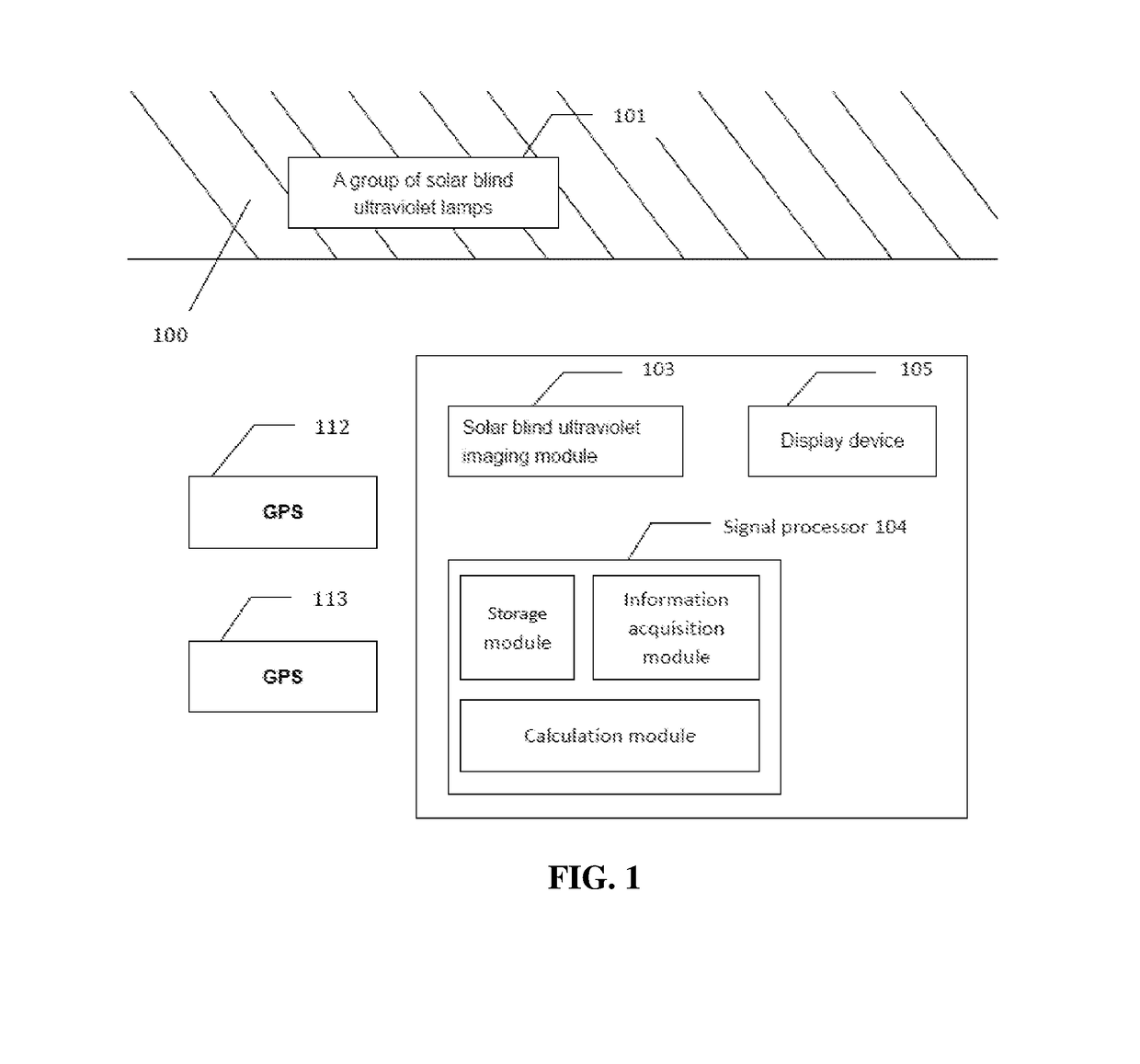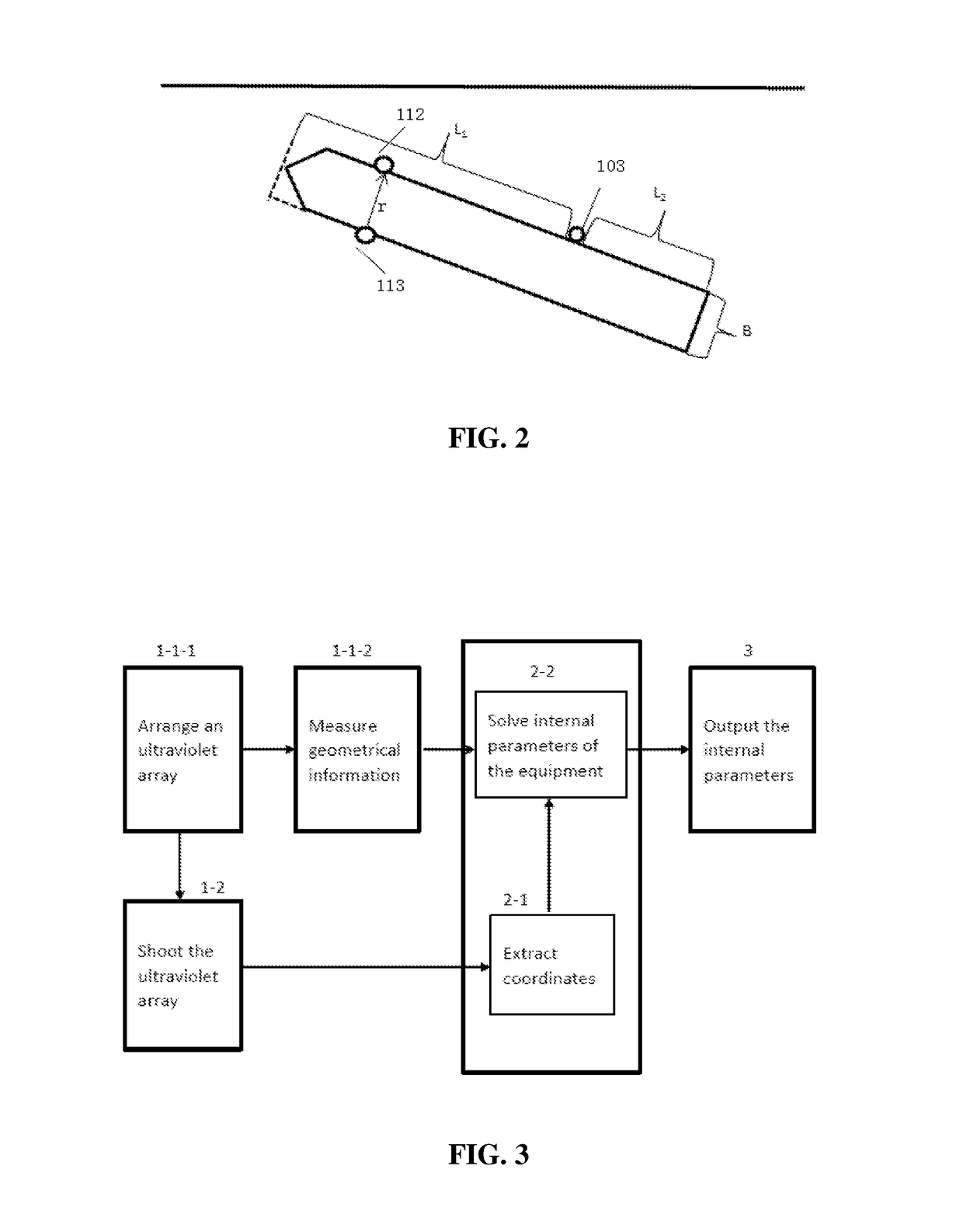Auxiliary berthing method and system for vessel
a navigation method and auxiliary berthing technology, applied in the direction of steering initiation, image enhancement, instruments, etc., can solve the problems of maritime accidents, high working intensity of pilots, serious affecting etc., to ensure the smoothness of waterways and port logistics in the foggy weather, and improve positioning accuracy.
- Summary
- Abstract
- Description
- Claims
- Application Information
AI Technical Summary
Benefits of technology
Problems solved by technology
Method used
Image
Examples
embodiment 1
[0080]FIG. 1 shows a block diagram of a system for berthing and navigating a vessel. The present invention mainly solves the problem on close-distance berthing of the vessel in the foggy weather. In this embodiment, the vessel navigation system includes a group of solar blind ultraviolet lamps 101, two GPS modules 112 and 113, a solar blind ultraviolet imaging module 103, a data processing module 104 and a display device 105.
[0081]All the GPS modules 112 and 113 and the solar blind ultraviolet imaging module 103 are mounted on the vessel. The differential GPS modules 112 and 113 are preferably mounted at such a position that it is most convenient to determine the course. In this embodiment, the two differential GPSs are mounted on decks on two sides of a cab, and a connection line between the two differential GPS modules may be approximately perpendicular to a connection line between the head portion and tail portion of the vessel. In the two differential GPS modules, the master GPS...
embodiment 2
[0115]This embodiment describes how to obtain optimal position information from multiple groups of data by the following algorithm.
[0116]A vector pi(xi,yi,zi) is used to represent the positioning data, which is subjected to angular and spatial transformation, returned by N systems, where i=1, 2, 3 . . . N. The positioning data, which is subjected to angular and spatial transformation, is obtained by the following method: when the relative positions of all the solar blind ultraviolet imaging module and the GPS signal receiving modules and the attitude angle of the vessel are known, the measured position data of different measurement modules are converted into the measured position data of a same measurement module based on a spatial position relationship and through spatially geometric transformation. The specific transformation method is as follows:
[0117](1) a reference point is determined, wherein the reference point may be the position of any one of the solar blind ultraviolet rec...
embodiment 3
[0128]The specific steps of performing ultraviolet camera calibration and solving internal parameters in a system with an enhanced close-distance vessel navigation capability according to the present invention will be described below by way of examples.
[0129]There are many methods for calibrating the camera and algorithms for solving the internal parameters. Here, a conventional calibration technology or Zhenyou Zhang's calibration algorithm is preferably selected. In the Zhenyou Zhang's calibration algorithm, a checkerboard-shaped calibration template is used, and connection points of black and white checkers on the calibration template are used as feature points of the calibration target. Calibration targets are placed at different positions, and synchronous acquisition is performed on the camera to obtain internal and external parameters of the camera. This method does not require any expensive instruments, and is excellent in robustness, easy to operate and improved in accuracy ...
PUM
 Login to View More
Login to View More Abstract
Description
Claims
Application Information
 Login to View More
Login to View More - R&D
- Intellectual Property
- Life Sciences
- Materials
- Tech Scout
- Unparalleled Data Quality
- Higher Quality Content
- 60% Fewer Hallucinations
Browse by: Latest US Patents, China's latest patents, Technical Efficacy Thesaurus, Application Domain, Technology Topic, Popular Technical Reports.
© 2025 PatSnap. All rights reserved.Legal|Privacy policy|Modern Slavery Act Transparency Statement|Sitemap|About US| Contact US: help@patsnap.com



